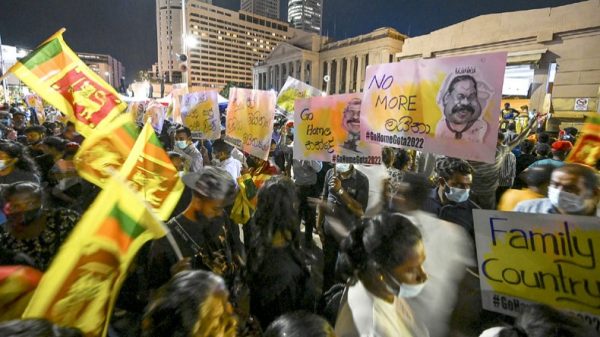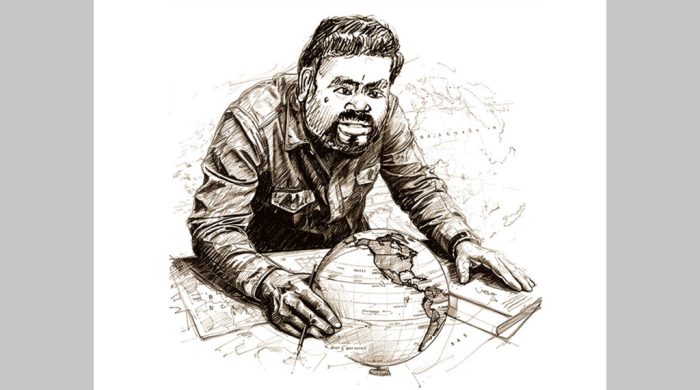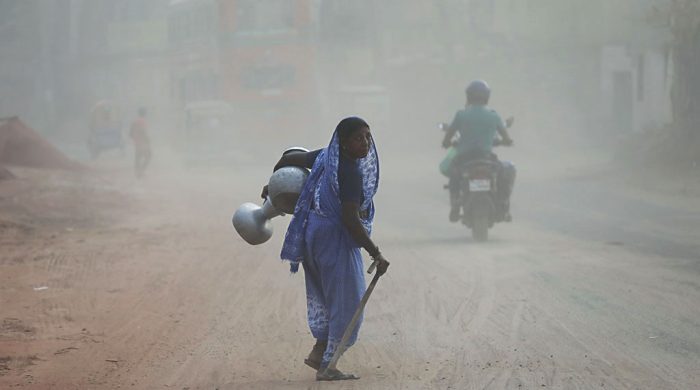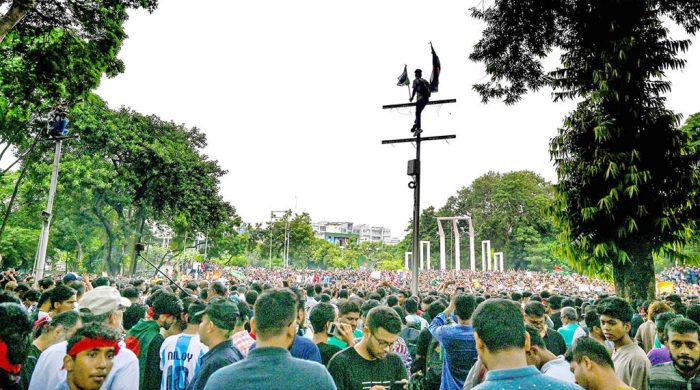Sri Lanka: the way forward

- Update Time : Friday, April 29, 2022
- 179 Time View

SINCE the Anuradhapura period, Sri Lanka has long held the status of a major trading epicentre given its accessibility because of its geographical location and available infrastructure. The country’s trade in luxury goods and spices attracted traders of many nations which helped Sri Lanka to create it as a buzzing business hub because of its diverse population. Sri Lanka is famous for its rich biodiversity, large cinnamon and tea plantations, stunning natural wonders and scenic beauty. It is also known as the ‘pearl of the Indian Ocean’ and has diverse cultural and religious origins across the populace. Today, Sri Lanka is a multinational state, home to diverse cultures, languages and ethnicities. The Sinhalese are the majority while the Tamils, a large minority group, have also played an influential role in the island’s history and prosperity.
Sri Lanka is the highest-ranked South Asian nation on the Human Development Index and had one of the highest per capita incomes in South Asia on the back of significant economic accomplishments and as such was once, not long ago, considered to be another Singapore in this part of the world. It was also one of the earliest nations to achieve 100 per cent literacy because of their quality of education. Its mass transport system and general healthcare facilities are an example for neighbouring countries.
However, after a long run of successes, the country has hit an economic downturn after defaulting on foreign debts because of a shortage in foreign currency. This has resulted in the collapse of the economy, rising inflation, power outage and severe shortage of essential goods. Subsequently, Sri Lankans have taken to the streets in demonstrations demanding that the government, including the president, should step down.
Post independence from the British in 1948, Sri Lanka’s agriculture was dominated by export-oriented crops such as tea, coffee, rubber and spices. Foreign exchange earned from export contributed significantly to the gross domestic product. That earning was used to import essential food items. Over the years, the country also began to earn foreign exchange from garment export, tourism and remittances from Sri Lankans living overseas. Understandably, any decline in export earnings would naturally set foreign exchange reserves under strain. Sri Lanka frequently encountered balance of payments issues because of this decline. The International Monetary Fund has regularly supported Sri Lanka with loans to overcome its economic requirements. Each of the loans came with conditions, including that Sri Lanka would need to reduce its budget deficit, maintain a tight monetary policy, cut government subsidies on food, and depreciate the currency so that so export would become more viable. But usually in periods of economic downturns, a prudent fiscal policy dictates that governments should spend more on impetus in the economy. This becomes almost impossible with the IMF conditions. Despite this situation, the IMF loans kept coming and a beleaguered economy soaked up more and more debt. The conditions were challenging to comply with and the financial health plummeted ominously over time to which successive governments were oblivious to.
Growth, investments, savings and revenues fell while the debt burden rose. A bad situation turned worse with two specific economic shocks in 2019. First, there was a series of bomb blasts in churches and luxury hotels in Colombo in April 2019. The blasts led to a steep decline, by 80 per cent, in tourist arrivals that drained foreign exchange reserves. The revenue from tourism was a staggering $5 billion a month which overnight became zero, additionally abetted by the onset of the Covid-19 outreak. Second, the government under president Gotabaya Rajapaksa irrationally cut taxes. VAT rates were cut from 15 per cent to 8 per cent as well as other indirect taxes such as the nation-building tax and the pay-as-you-earn tax. Similarly, corporate tax rates were reduced from 28 per cent to 24 per cent. Personal and corporate income taxes were also severely decreased to garner cheap support. Taxes on retirement gratuity were significantly lowered from 24 per cent to 15 per cent and pensions were awarded to state bank employees and economic service charges were abolished. Fuel prices were hugely subsidised even after importing from India, sold at lower than cost prices. A significant amount of revenue was lost as a result of such cuts, thereby negatively impacting the gross domestic product.
Furthermore, in April 2021, during the Covid-19 outbreak, the Rajapaksa government made another blunder. The import of fertiliser was entirely banned to save foreign exchange reserves. Sri Lanka was declared a 100 per cent organic farming nation. This policy, although withdrawn in November 2021, led to a drastic fall in agricultural production by around 25 per cent, thereby further harming the GDP growth. A fall in the production of tea and rubber because of organic farming also led to a lower export income. The government was, therefore, unable to import food and other essential items because of the shortage of foreign exchange at the back of lower exports. Consequently in February 2022, inflation rose to 17.5 per cent with prices of food items soaring to unprecedented levels. The situation was so grim that the country could not hold school-level examinations because of a shortage of paper. All the above policies backfired and created a huge dent in the government revenue and the government was unable to make ends meet. Besides, the government had to close its only fuel refinery as it ran out of crude oil stocks. The situation is so dire that the country has had to deploy soldiers at petrol pumps for the rationing of fuel.
The huge levels of debt can also be traced to the reactionary communal war prosecuted by successive governments not only to defeat the separatist Liberation Tigers of Tamil Eelam but also to crush any opposition by the Tamils to blatant communal discrimination. Money was repeatedly borrowed to buy arms and to expand the military into one of the largest per capita in Asia. Last but not the least, the Covid-19 outbreak that hit Sri Lanka badly coupled with Russia-Ukraine war alarmingly aggravated the situation.
Economists had for long signalled that Sri Lanka was walking on tightrope. The country was on the verge of an economic disaster as it was highly vulnerable to external shocks because of high debt, currently at $51 billion. According to the International Monetary Fund, inadequate external buffers and high risks to public debt sustainability, aggravated by a long-drawn civil war, the Easter Sunday terrorist attacks in 2019 and major policy changes, including large tax cuts in late 2019, a huge debt obligation, dynastic rule of the Rajapaksha family and deep-rooted corruption were the primary reasons for such catastrophe. Critics also think that roots of the crisis, the worst in several decades, lie in economic mismanagement by successive governments that created and sustained a twin deficit — a budget shortfall alongside a current account deficit.
Regrettably and as a consequence, Sri Lanka has just declared bankruptcy and defaulted on its foreign debt repayment for the first time since its independence. On April 1, Rajpaksha declared a state of emergency. In less than a week, he withdrew it amidst massive protests by angry citizens over the government’s handling of the crisis. At a media briefing on April 12, the central bank governor said: ‘We have lost the ability to repay foreign debt. It has come to a point that making debt payments are challenging and impossible.’ The finance secretary declared that ‘a comprehensive restructuring of these (debt) obligations will be required.’ The announcement came while hundreds of thousands have demonstrated throughout the country for more than a month demanding that Rajapaksa and his government should immediately resign. The protests have attracted a wide support from the 22 million people who now suffer from intolerable price increase and insufficiency of basics such as fuel, medicines, cooking gas, electricity and necessary food items.
Efforts by India, China & IMF
INDIA has already come forward to rescue Sri Lanka from such a severe turmoil. Through the Indian government’s mantra ‘neighbourhood first’, it would extend a $2 billion credit line to Sri Lanka to tide over the crisis partially and is considering another $2 billion for a long-term sustenance. India also urged the International Monetary Fund to urgently provide financial assistance for Sri Lanka. This was conveyed by Indian finance minister Nirmala Sitharaman during her bilateral meeting with Kristalina Georgieva, managing director of the International Monetary Fund, on the sidelines of the IMF-WB spring meetings in Washington. Georgieva assured the Indian finance minister that it would continue to actively engage with Sri Lanka.
The International Monetary Fund has initiated discussions with Sri Lankan authorities on a possible loan programme in ‘coming days’, which is supported by India. The agency will possibly extend a lifeline to Sri Lanka in the not very distant future. The agency recently stated that Sri Lanka needs to tighten its monetary policy to arrest rising inflation, restructure the huge debt before any bailout strategy can be considered, draw out a debt repayment plan and reverse the wrong policies for which the country has faced one of the worst financial crises in years. Before heading to the International Monetary Fund, Sri Lanka steeply devalued its currency, further stoking inflation and adding to the pain of the public. The International Monetary Fund stated that Colombo’s debt is a hurdle to any new emergency financing. The agency will impose even harsher conditions in discussions for an emergency bailout package with the Sri Lankan delegation led by finance minister Ali Sabry, which left on April 18 to meet IMF officials in the United States. The package is to assure creditors and lenders and rescue Sri Lanka from this dire situation. The banking sector has been adversely affected by the default, with international rating agencies, such as Fitch, already putting Sri Lanka’s state and private banks on watch for a downgrade that effectively negates it out of international capital markets. In turn, Sri Lanka’s debt management programme, which depended on accessing those markets, derailed. According to Reuters, Sri Lanka’s reserves have dropped alarmingly by 70 per cent since 2020, dwindling to $2.36 billion at the end of January and $2 billion in March. But the island has debt repayments of nearly $4 billion this year, including a $1 billion repayment of international sovereign bond maturing in July. And another $25 billion by 2026.
Many believe Sri Lanka’s economic relations with China are a principal driver behind the current crisis. The United States has termed this occurrence debt-trap diplomacy to increase political leverage. However, loans from China accounted for only about 10 per cent of Sri Lanka’s total foreign debt while Japan accounts for 11 per cent and 30 per cent borrowing is attributed to international sovereign bonds. Defaults over China’s infrastructure related loans to Sri Lanka, especially the financing of the Hambantota Port, are cited as reasons contributing to the crisis. However, it is the opposite. The port was running at losses; so, Sri Lanka leased it out for 99 years to the Chinese Merchant’s Group, which paid Sri Lanka $1.12 billion. Thus, the Hambantota Port fiasco did not contribute to this economic crisis, but actually bolstered Sri Lanka’s foreign exchange reserves by $1.12 billion. Furthermore, despite the allegation that China is providing the Sri Lanka with a $1.5 billion swap and a $1.3 billion syndicated loan, China is also considering a $1.5 billion credit facility and a separate loan of up to $1 billion for Sri Lanka to overcome this precarious situation. It seems that Sri Lanka’s economic relations with China are, in fact, beneficial as opposed to detrimental, which some claimed.
Lankan strategy for way forward
THE announcement of a temporary default on foreign loans is not a repudiation of foreign debt. The government has assured all creditors that debt repayments will be made with interest for the delay period. It further guaranteed that debt ‘restructuring proposals can be presented to the creditors for their consideration’ and they will be consistent with IMF recommendations. The government is also promising ‘good faith’ discussions with the countries that have lent them money. While Sri Lanka’s economy is bankrupt, the timing of the announcement is a political decision aimed at pressuring the population into accepting the International Monetary Fund’s terms.
The Lankan prime minister Mahinda Rajapaksa’s handling of the situation has been less than inspiring and reflects on the adverse impacts of dynastic rule. In an address in the past week, the prime minister, cynically tried to pin the blame for the economic crisis on the protest movement, declaring that with every second of protests on the street, ‘our country loses opportunities to receive potential dollars.’ He ironically denounced the protests as a ‘threat to democracy’ and, in a delicately disguised threat, recalled how previous governments used the military and death squads to neutralise opposition in the past.
As a retaliation, the Socialist Equality Party has outlined a socialist programme of action for the working class to secure its legitimate interests. The programme aims at organising the rural poor and the oppressed to contest for their justifiable demands, topple the autocratic power of the government, abolish detrimental policies for the common mass, repeal repressive laws and ensure social rights. The Socialist Equality Party has defined a series of policies, including the repudiation of foreign debt. The working class has not incurred this debt and must not be forced to pay for it by compromising on their lifestyle, both financially and socially. The Socialist Equality Party demands the confiscation of the illegal wealth of the rich and elite and the nationalisation of banks and major corporations, under the democratic control of the working class, to ensure the social needs of the majority are met.
There are two major inter-related issues responsible for regressing Sri Lanka to where it is now — (a) political immaturity, poor decision making, the weakening of democratic institutions, the continuing of the brutal civil war, weak and corrupt governance with lack of accountability and ineffective leadership by the Rajapakshe dynasty; and (b) financial mismanagement, including but not limited to huge tax exemptions, significant unused debt obligations that comes with very difficult terms and conditions and overall short sightedness of the government. None of the governments undertook any efforts to institutionalise democracy or any fundamental economic or social reform, or strengthen the institutions of accountability.
To reverse the current situation, the International Monetary Fund issued its assessment of the country at the end of the past month, along with a draconian austerity programme. It included raising income and value-added taxes; increasing fuel and electricity prices; instituting a market-determined flexible exchange rate; the commercialisation and privatisation of state-owned enterprises; deep inroads into state expenditure; and the further slashing of price controls and subsidies. Whether this will alleviate the situation or add fuel to the fire by angering already suffering citizens because of high prices and the shortage of resources is a conundrum.
Other than the adversarial shock of Covid-19, all other concerns swamping Sri Lanka are creations and outcomes of the corrupt successive governments with a flawed approach to governance, economy, favouritism and leadership. To overcome from this precarious predicament, Sri Lanka has to institutionalise democracy, denounce dynastic rules, institute an effective and populist government with accountability, restore beneficial economic policies and ensure a level playing field for all classes.
Touhid Shipar Rafiquzzaman is a retired banker.



















